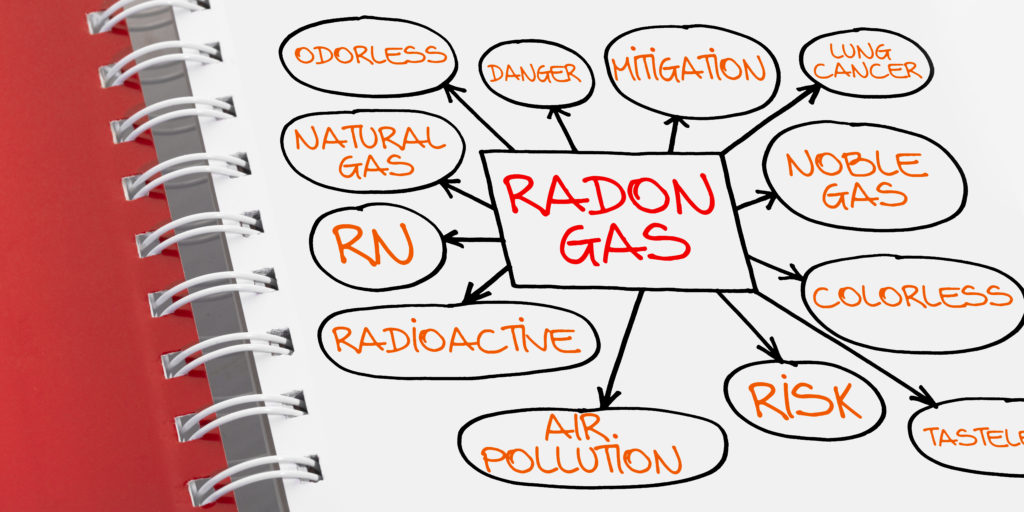Radon Myths & Facts
Know the Truth about the Dangers of Radon and How to Protect Your Home
 Radon is a radioactive gas that has been found in homes and buildings all over the United States. It comes from the natural breakdown of uranium in soil, rock, and water and gets into the air we breathe. Radon typically moves up through the ground to the air above and into a home or building through cracks and other holes in the foundation. Radon can also enter your home through well water. The danger is that radon can become trapped inside your home.
Radon is a radioactive gas that has been found in homes and buildings all over the United States. It comes from the natural breakdown of uranium in soil, rock, and water and gets into the air we breathe. Radon typically moves up through the ground to the air above and into a home or building through cracks and other holes in the foundation. Radon can also enter your home through well water. The danger is that radon can become trapped inside your home.
According to the EPA in its publication Home Buyer’s and seller’s Guide to Radon, any home can have a radon problem. There are many myths and misconceptions about radon and so it’s important to know the facts about radon so you can protect yourself and your family from the dangers of radon. It’s also important to know the myths and misconceptions. Be sure to separate fact from fiction so that you will be able to make informed decisions if radon is detected in your home.
Myth #1 Scientist are not sure that radon really is a problem
Fact: Radon causes thousands of preventable lung cancer deaths each year. This is especially true with smokers, since the risk to smokers is much greater than to non-smokers.
Myth #2 Radon testing devices are not reliable and are difficult to find.
Fact: Reliable radon tests are available from qualified radon testers and companies. Active radon devices can continuously gather and periodically record radon levels to reveal any unusual swings in the radon level during the test.
Myth #3 Radon testing is difficult and time-consuming.
Fact: You can test your home yourself or hire a qualified radon test company like Turn-Key Environmental.
Myth #4 Homes with radon problems cannot be fixed
Fact: There are solutions to radon problems. Thousands of home owners have already lowered their radon levels. Most home can be fixed for about the same cost as other common home repairs.
Myth #5 Radon only affects certain types of homes.
Fact: Radon can be a problem in all types of homes including old homes, new homes, drafty homes, insulated homes, and homes with or without basements. What can affect radon levels in homes is the local geology, construction materials, and how the home was built are among the factors that can affect radon levels.
Myth #6 A neighbor’s test result is a good indication of whether your home has a radon problem.
Fact: It is not. Radon levels vary from home to home. The only way to know if your home has a radon problem is to test it.
Myth #9 It is difficult to sell a home where radon problems have been discovered.
Fact: Where radon problems have been fixed, home sales have not been blocked. The added protection is often a good selling point.
Myth # 10 Everyone should test their water for radon
Fact: While radon get into some homes through the water, it is important to first test the air in the home for radon. If your water is through a public water system that uses ground water call them for any relevant data. If high radon levels are found and the home has a private well, have your water tested.
Call Turn-Key Environmental for your free quote for Dayton, Ohio radon testing and/or water testing.
937-335-8807 or email us tkec@turn-keyenvironmental.com


